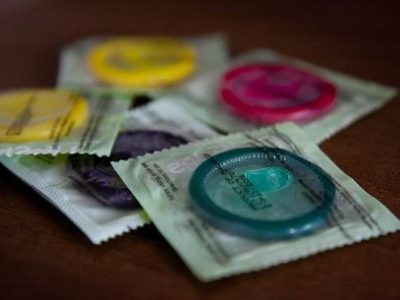At a time when the lesbian, gay, bisexual and transgender community is making more strides towards progress, one would anticipate a greater understanding and lessened stigma associated with LGBT relationships and sexual health issues. However, according to a recent report from the Institute of Medicine, little is known about health issues affecting the LGBT population. Many still fear disclosing their sexual orientation due to the discrimination they may experience, leaving them reluctant to seek answers to about their sexual health.
College Magazine asked LGBT students what they wanted to know and sought the expert advice of Dr. Eric Christof, in answering these questions:
Do lesbians have a lower risk of getting HIV? What are some ways to practice safe sex between women? — Junior, University of California, San Diego
Generally lesbians are at relatively low risk of HIV infection and unplanned pregnancy because the body fluids most likely to infect, are seminal fluid and blood. However, sex between women has its risk: lesbians are just as vulnerable to other sexually transmitted infections (STIs), including genital herpes, chlamydia, hepatitis B and C, and anogenital warts. Lesbians should also have regular cervical smears, because sex between women can transmit HPV, the virus associated with cervical cancer. Smear tests can detect pre-cancerous cells and early treatment is crucial in preventing cancer. STIs are also more common in lesbian and bisexual women with a history of heterosexual activity, so it is important to practice safe sex and to learn how to protect yourself. Latex gloves and condoms can be used for genital and anal stimulation. If anal sex occurs first, it is best to change gloves or condoms before stimulating the vagina, to keep bacteria from spreading. A dental dam or plastic wrap is advisable for oral sex.
Do bisexuals spread STIs more than other groups? — Junior, Sacramento State University
Definitely not! Bisexuals are sometimes scapegoated as the agents of transmission of STIs because it is assumed that they jump from one gender to another. However, a bisexual person does not need to be sexually involved with both a man and woman simultaneously, and many choose not to adopt this sexual lifestyle. In fact, it is behavior rather than sexual orientations that puts people at risk of acquiring STIs.
What are the potential risks of anal sex, other than STIs? — Senior, Oberlin College
Tearing of the anal sphincter is the main risk because the lining of the anus is more delicate and produces less natural lubricant than the vagina. Anal sex can also make a person more susceptible to bacterial infection around the anus and rectum. If the anus or rectum is torn, it does not heal as quickly and there is more of a risk of infection due to feces. It is important that the partner on the receiving end is relaxed and in a frame of mind to engage in the activity. Using lubricant and/or a condom can also help.
How is “transgender” defined? — Freshman, Diablo Valley College
Transgender is an umbrella term used to describe people whose gender identity or gender expression differs from that usually associated with their birth sex. Many transgender people live part-time or full-time as members of the other gender. Cross-dressers and transvestites comprise the most numerous transgender group, with the great majority of cross-dressers being biological males, most of who are sexually attracted to women.
Do gay men get HIV/AIDS more often than heterosexual men and women? — Sophomore, California State University, Long Beach
Statistically, yes. Gay, bisexual and other men who have sex with men represent 2 percent of the U.S. population, yet they are the population most severely affected by HIV and are the only risk group in which HIV infections have been increasing steadily since the 90s. A recent study by the Centers for Disease Control and Prevention found that homosexual men account for 61 percent of the new HIV infections in the U.S., and that young gay men have a higher risk for contracting HIV/AIDS than their heterosexual counterparts. Sexual risk accounts for most HIV infections in gay men, including unprotected sex and STIs. However, during the last 10 years, the percentage of heterosexuals infected with HIV has increased, with women being 20 times more likely to get it than men.
Dr. Christoff is a practicing physician at Northwestern Memorial Hospital, as well as Assistant Professor of Clinical Medicine at the Feinberg School of Medicine, Northwestern University. His areas of expertise include the treatment of HIV and syphilis along with other STDs, the medical treatment of depression and chronic fatigue, and the specific health needs of gay and lesbian patients. Dr. Christoff also serves as a sexual health consultant for SexualHealth.com, an online destination for private HIV and STD testing, personalized medical care and expert health information.



















